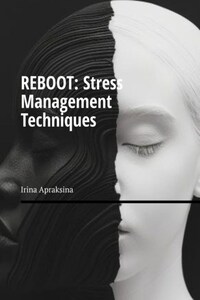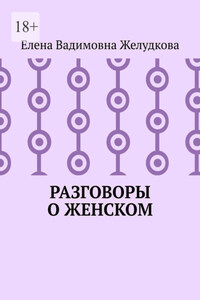Introduction: Why Stress Management Exercises Are Necessary
In a world where each day brings new challenges and opportunities, stress management becomes not just a useful skill but a necessity of life. «Stress Management or How Not to Go Crazy in the Modern World» is your navigator through the turbulent waters of modern life, a toolkit for maintaining peace of mind amidst chaos. Our book offers tested strategies and practices that help you not just cope with stress, but also learn lessons and seize opportunities from difficult situations.
We live in an era where the flow of information is constant and social and professional demands are ever-increasing. This creates an ideal environment for stress, which if not managed, can seriously undermine both our physical and psychological health. Our approach to stress management does not shy away from the complexities of modern life but offers effective ways to overcome them.
This book is aimed at everyone who seeks better ways to understand and manage their reactions to stress. We explore the scientific foundations of stress, examine different types of stressors, and offer specific exercises and recommendations that can be incorporated into daily life. From the basics of meditation and mindfulness to physical exercises and social support – our recommendations will help you find your path to balance and harmony.
Welcome to a journey towards conscious and productive stress management. Together we will learn not just to survive but to thrive in the modern world. Therefore, we present to you the most effective and popular ways to manage stress in this book. Stress management exercises play a crucial role in maintaining both physical and psychological health. Regular physical exercises help reduce levels of cortisol and adrenaline – stress hormones. At the same time, exercises stimulate the production of endorphins, chemicals in the brain that act as natural painkillers and mood enhancers.
Stress can seriously disrupt your sleep, making it intermittent or shallow. Exercises can promote deep sleep, which in turn can reduce stress.
Regular workouts can improve your overall physical condition, which positively affects your self-perception and increases self-confidence. An improved self-perception can be an effective means against stress. Activities requiring repetitive movements such as running, swimming, or yoga can have a meditative effect on the brain, helping to distract from stressful thoughts. Many types of physical activity, such as team sports or group fitness classes, provide opportunities for interaction with others, which can reduce feelings of loneliness and isolation. Integrating stress management exercises into your daily routine can significantly improve your life, making you more resilient to the stresses of everyday life.
Chapter 1: Breathing Techniques
Breathing is not only a physiological process necessary for sustaining life but also a powerful tool for managing stress. In this chapter, we will explore how simple changes in your breathing can significantly reduce stress levels and improve your overall well-being.
Breathing techniques are accessible and effective methods that can be used anywhere and anytime to instantly relieve tension. They help activate the parasympathetic nervous system, leading to a reduction in heart rate, lowering blood pressure, and muscle relaxation.
In this chapter, we will introduce you to various breathing techniques such as diaphragmatic breathing, the «four-seven-eight» breathing, and alternate nostril breathing, each with its unique benefits. We will teach you how to perform these exercises correctly, explain why they work, and show you how to integrate them into your daily routine for maximum benefits. Prepare to master the art of breathing to reduce stress and improve the quality of your life.
Subchapter 1.1: Basics of Breathing Exercises
Breathing exercises are considered one of the most effective stress management methods due to their ability to affect the autonomic nervous system. This system, which controls many of the body’s unconscious functions, including breathing, pulse, and digestion, consists of two interacting components: the sympathetic and parasympathetic nervous systems.
The sympathetic nervous system is activated in response to stress, initiating the «fight or flight» response, which increases heart rate, blood glucose levels, and muscle tension, preparing the body for immediate physical actions.
The parasympathetic nervous system acts as a balancer, activating in calm conditions and facilitating the «rest and digest» response, which slows down the heartbeat, reduces blood pressure, and promotes relaxation and recovery.
Breathing exercises primarily affect the parasympathetic nervous system, helping to reduce physiological manifestations of stress. Basic techniques, such as diaphragmatic breathing (or belly breathing), involve deep, regular inhalations and exhalations that increase lung volume and activate neural pathways responsible for relaxation.












